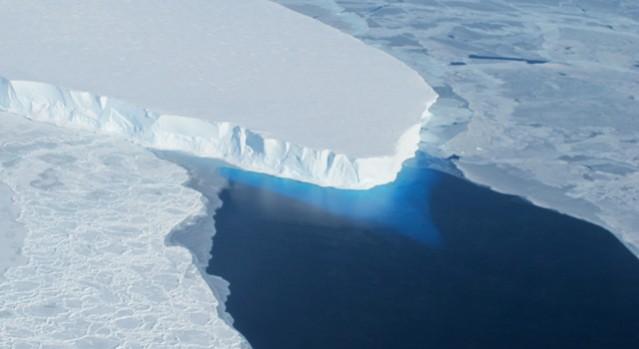
The Thwaites glacier in western Antarctica is part of a relatively small ice shelf is moving fast toward the sea. West Antarctic Ice Sheet is mostly supported by land so any amount of ice that falls into the sea will directly add to global sea-level rise and this one ice sheet alone could raise global sea levels by up to 3 feet.
A massive team of over a hundred scientists, from the US, UK, and several other countries have been roped in to study the Thwaites glacier. This glacier is of particular interest, notes a report by LiveScience, because of the way it acts like a cork. A small bit of ice, closest to sea holding back a massive amount of land ice behind it. If it pops under pressure of global warming and falls in the ocean, it will aid the free flow of ice and melt water into the planet's oceans.
"The future picture of what the glacier will do is dependent on the bed," said Sridhar Anandakrishnan, professor of geosciences, Penn State and principal investigator for this five-year, study. "We need to know if it is sediment or hard rock and whether it is rough or smooth. All these details make it easier to understand what the glacier's response will be over decades and centuries."
"Thwaites is a relatively slow-going glacier in the interior," said Anandakrishnan. "But at the terminus, it can move at the rate of 2.5 miles per year."
The study is going to focus on the point where the glacier and rock bed beneath it interact.
The main differences between land ice falling into the sea and sea ice melting into the ocean is that with land ice, new water is sent into the sea, raising its levels, affecting salinity and this change is permanent, like what is happening in Antarctica. Sea ice melting and solidifying, like in the Arctic has an effect on the world's climate, this ice melting will not affect the sea levels around the planet.
Sea level rise is not good for the planet
Globally, the sea level is rising by a little over 3 mm per year, in 2014, it was estimated that over the world, the sea was about 67 mm above the 1993 average, according to a report by the National Oceanic and Atmospheric Administration (NOAA). That directly contributes to deadly and destructive storms as well as an increase in the frequency of nuisance flooding – high tide flooding. Nuisance flooding is estimated to have increased from 300 percent to 900 percent more frequent within the US coasts in just 50 years.
The two major causes for oceans swelling are land ice melting and falling into the water, and thermal expansion of world's seas as global warming increases, notes the report. Ocean waters absorb about 90 percent of all the extra heat in the atmosphere that can be directly attributed to human activity, says NOAA. This means that the rate at which sea levels rise will actually be higher in the coming centuries than it is now.
Either way, rising sea levels are not good for the planet at all.

















